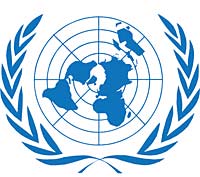The United Nations Economic Commission for Latin America and the Caribbean (Cepal) now seems more optimistic, and rose its expectations of economic growth in the region to 4.5%. This expansion of economic activity in Latin America is led by Venezuela with 12%.

According to Cepal, which had predicted 3,8% growth for 2004 last May, the change is due to a recovery in most countries as a result of an increase in exports.
Second to Venezuela, Argentina registered 7.1% growth, followed by Chile with 4.8%, Mexico with 3.8%, and Brazil with 3.7%.
According to a report by Cepal “The motor for this expansion are the exports, product of favorable international circumstances, especially the recuperation of some developed economies, like those of Japan and the U.S.”. Furthermore, the “driving force of China’s economy benefits raw material exporting countries”.
Despite the good regional expectations for 2004, Cepal warned that keeping up this positive cycle in the upcoming years will depend on the future evolution of internal and external factors. The report indicated that “From the internal point of view, the weak levels of demand in several of the region’s economies, cast doubt on the consolidation of this recovery process... In the external context, there is some economic unbalance that sooner or later should be dealt with; and although this circumstance doesn’t imply imminent danger, it foreshadows an eventual slowdown in the growth rate of the world economy,”
For Cepal, it is likely that internal consumption recuperates throughout 2004, as a result of a greater economic activity, an increase in the employment rate, and higher income levels of the countries, generated by an improvement in the trading terms. The Cepal report pointed out that the indicators available show that investments are beginning to reactivate, product of an increase of economic activity.
 Articles by this author
Articles by this author Send a message
Send a message











Stay In Touch
Follow us on social networks
Subscribe to weekly newsletter